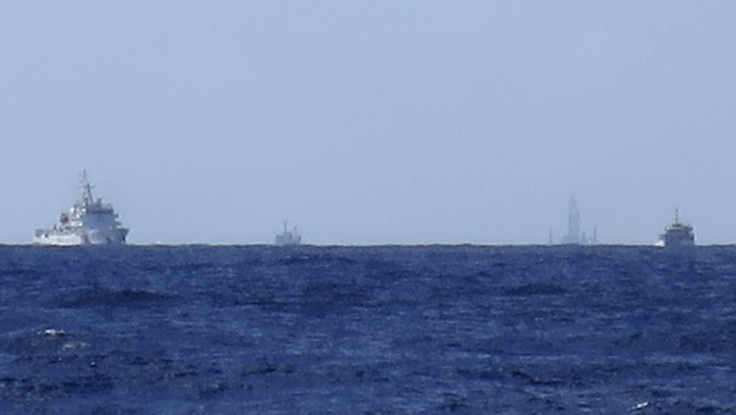Vietnamese, Chinese Ships In Weeks-Long Standoff Near South China Sea Oil Block

Tensions between China and Vietnam in the disputed South China Sea have risen sharply, with ships from both the countries carrying out "aggressive maneuvring" in the oil-rich waters in recent weeks.
The incidents prompted Vietnam’s foreign ministry to release a statement Tuesday, warning "foreign parties" that their actions constitute encroachment of Venietnamese waters.
The developments include a survey of water and oil blocks (a geographical area under which an oil or gas reservoir lies) carried out by the China Geological Survey aboard the Chinese ship The Haiyang Dizhi 8. One of the oil blocks in the survey is licensed by the Vietnamese to Spanish oil company Repsol. In 2017, under pressure from China, Repsol ceased operations in the Asian waters.
The 12-day survey also included waters near Spratly Islands, located off the coasts of southern Vietnam, the Philippines and Malaysia. Data acquired from Windward Maritime, an assessor of maritime risk, indicated that as the survey was ongoing, the Chinese ship was tailed by nine Vietnamese vessels.
Another event involved the China Coast Guard ship Haijing 35111. It was reported maneuvering in a "threatening manner" towards some Vietnamese vessels that were busy servicing a Japanese-owned oil rig. This event occurred about 370km southeast of Vietnam.
These events took place within an area called the “Nine-Dash Line”, a vague U-shaped demarcation line in the South China Sea. China claims historical sovereignty of waters within the line dating back to 1912.
The text of the statement by Vietnamese foreign ministry spokesperson Le Thi Thu Hang reads: "Without Vietnam's permission, all actions undertaken by foreign parties in Vietnamese waters have no legal effect, and constitute encroachments in Vietnamese waters, and violations of international law.”
Prior to the Vietnamese statement, Chinese foreign ministry spokesperson Geng Shuang said that China's position on the South China Sea was "clear and consistent." He said, "China resolutely safeguards its sovereignty in the South China Sea and maritime rights, and at the same time upholds controlling disputes with relevant countries via negotiations and consultations.”
The current standoff is the latest example of China’s increasing threat to PetroVietman’s (PVN) lucrative offshore oil and gas business. At stake is approximately 4.4 billion tons of crude oil and gas reserves in the disputed waters. PetroVietnam produces nearly 30 million tons of oil each year from its oil blocks, which accounts for about 20 percent of Vietnam’s GDP, according to The Japan Times.
Other large oil companies have wilted under the heat of Chinese pressure. ConocoPhillips gradually sold its interests between 2008 and 2012, followed by Chevron. British Petroleum (BP) left as well but that was to raise funds needed to pay claims after the 2010 oil spill in the Gulf of Mexico. Only smaller companies with no connections to China have remained in the area.
© Copyright IBTimes 2024. All rights reserved.





















